Ключевые слова: coronary heart disease, brain stroke, atherosclerosis, Frank's sign, risk factors, cardiovascular diseases, horizontal crease, abdominal obesity, diabetes mellitus, dyslipidemia, fibrous tissue, complex carbohydrates, calcium deposits.
Every year more than 1 million people die of cardiovascular diseases in Russia. Coronary Heart Disease (CHD) and Brain Stroke (BS) are the leading causes of mortality among the population. Atherosclerosis plays an important role in the development of these diseases. Atherosclerosis (WHO) — is a variable combination of changes of the innermost tunica of arteries (intima), consisting of the local accumulation of lipids, complex carbohydrates, fibrous tissue, blood products, calcium deposits and associated with changes of the middle layer(tunica media) of an artery. There modifiable and nonmodifiable risk factors in the development of atherosclerosis. The modifiable risk factors include the following: smoking, hypertension, dyslipidemia, diabetes mellitus, abdominal obesity. The major factor among nonmodifiable ones is genetic predisposition. According to statistics 1/4 of the population group aged 18–20 years is in the risk group, and 1/5 of people aged 25–30 years already have signs of atherosclerosis. Pathognomonic symptoms include Frank's sign, which is characterized by the presence of a vertical or horizontal crease on the earlobe. The question whether the correlation between cardiovascular diseases (CDVs) and horizontal crease, discovered by Sanders Frank, exists remains open.
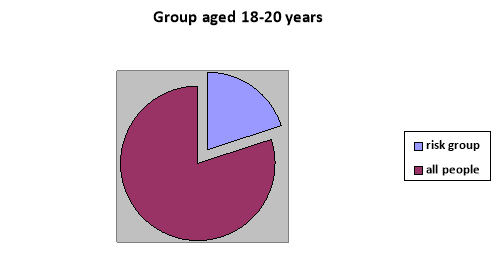
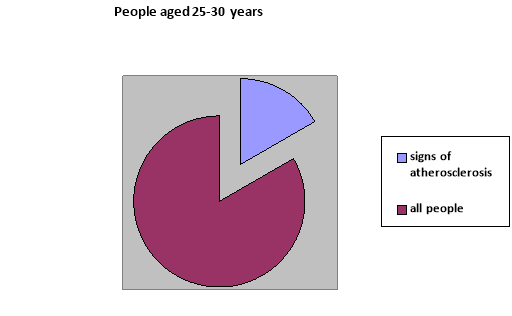
Objective: the study aimed to reveal the correlation between causes of atherosclerosis and the emergence of Frank's sign.
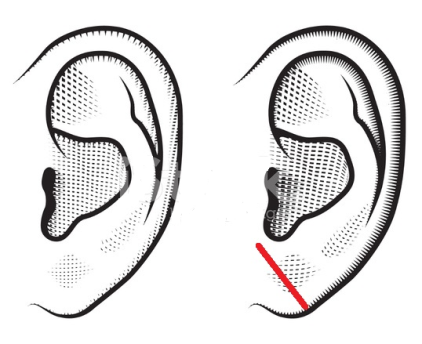
Input and methods: 96 and 49 patients of cardiology and rheumatology departments respectively have been surveyed with the help of physical examination. Once patients with such symptom had been identified we analyzed their medical histories. Blood cholesterol level was the most informative among biochemical parameters.
Results: Among 96 examined patients of cardiology department 28 were found to have Frank's sign. The counting and analysis have shown that there were 32 % of patients with unilateral manifestation and 68 % with bilateral one in cardiology department.

Analysis of cholesterol level rate: in patients with unilateral manifestation it amounted to 5,8, and with bilateral one- 6,4. Average age of cardiac patients was 70 years. In rheumatology department among 49 patients 12 were found to have Frank's sign.
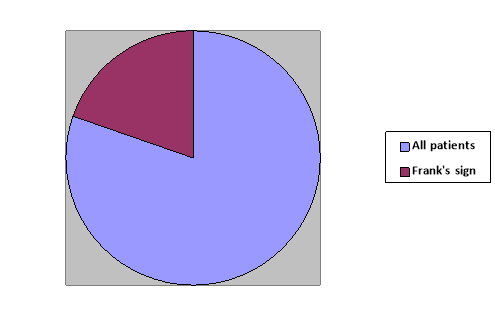
Data analysis has shown that the share of patients with unilateral manifestation was 40,0 %, with cholesterol level 5,4, and with bilateral one 60 %, cholesterol level 5,7. Average age of patients in rheumatology department was 63 years.
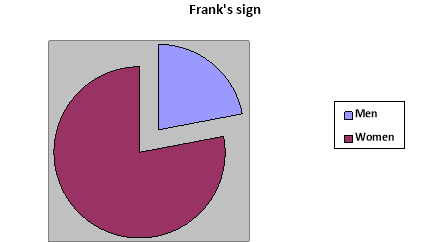
Conclusion:
The recent research points to the conclusion that Frank's sign is found in a quarter of patients with atherosclerosis, based on the increased cholesterol level.
References:
- Çelik Ş, Erdoǧan T, Gedikli Ö, Kiriş A, Erem C. Diagonal ear-lobe crease is associated with carotid intima-media thickness in subjects free of clinical cardiovascular disease. Atherosclerosis 2007;192(2):428–31.
- Christoffersen M. Visible age-related signs and risk of ischemic heart disease in the general population: a prospective cohort study / M. Christoffersen, R. Frikke-Schmidt, P. Schnohr et al] // Circulation. — 2014. — No. 9. — p. 990–998.
- Sherertz E. F. Stated age / E. F. Sherertz, S. P. Hess // N. Engl. J. Med. — 1993. — No. 4. — p. 281–282.
- Yabluchanskiy M. I. Internal diseases: the time of global somatic risk. / M. I. Yabluchanskiy, A. M. Yabluchanskiy, O. Y. Bychkova et al] // The Journal of V. N. Karazin Kharkiv National University, series Medicine. — 2013. — No. 25. — p. 5–7.







